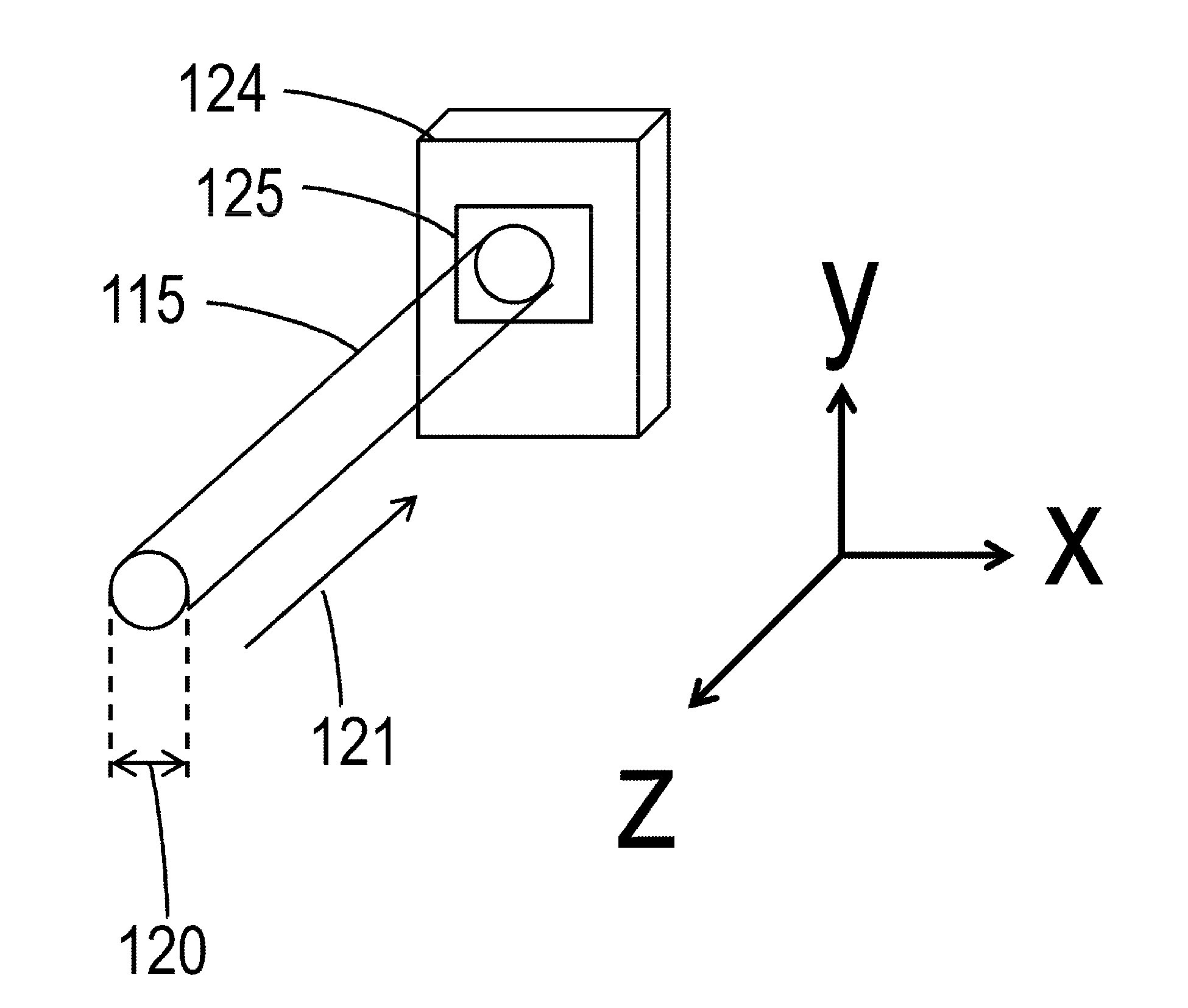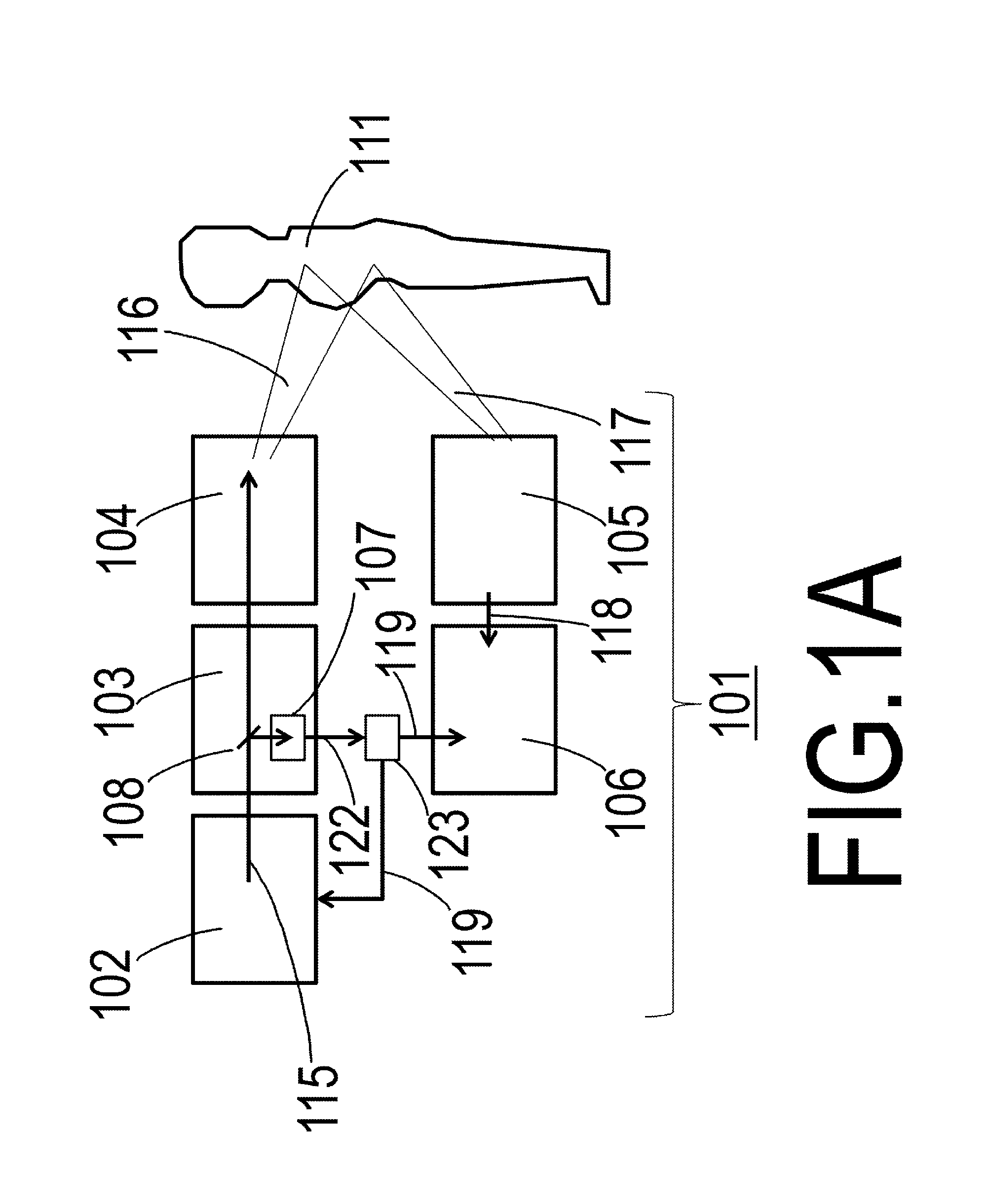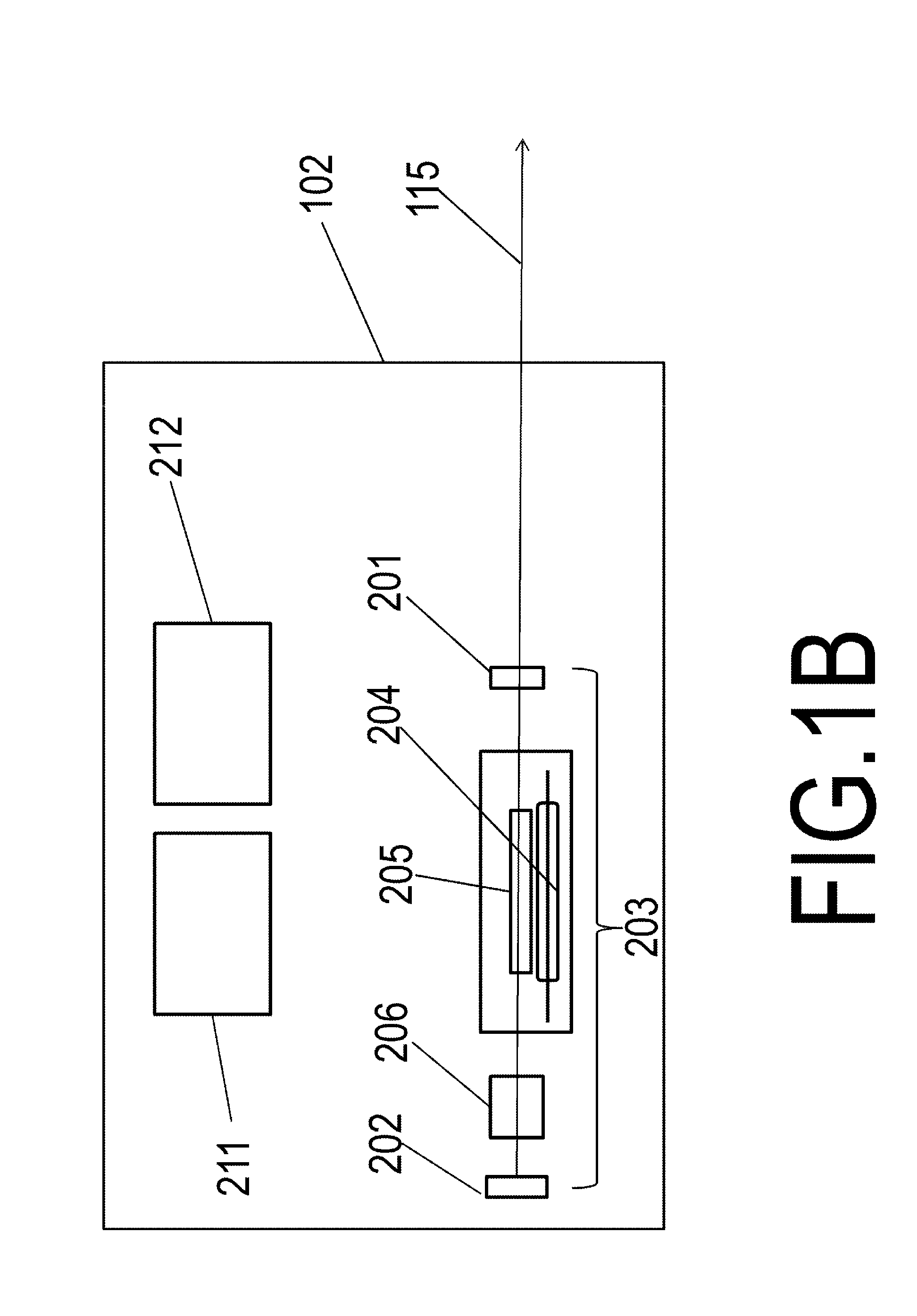Object information acquiring apparatus and laser apparatus used therein
- Summary
- Abstract
- Description
- Claims
- Application Information
AI Technical Summary
Benefits of technology
Problems solved by technology
Method used
Image
Examples
example 1
Practical Example 1
[0026]FIG. 1A is a drawing showing Practical Example 1 of the object information acquiring apparatus of the present invention. An object information acquiring apparatus 101 is provided with a laser light source 102. In addition, the object information acquiring apparatus 101 is further provided with a light-transmitting optical system 103, a irradiator in the form of a light-radiating optical system 104, an acoustic wave receiver 105 and an acoustic wave signal processing unit (an acoustic wave signal processor) 106. In addition, a detector in the form of a laser light sensor 107, a branch mirror 108, an object 111 and radiated light 116 are also shown in FIG. 1A. Moreover, an intensity detection signal 122, an acoustic wave signal 117, an electrical signal 118 and a prelasing determination signal, namely a determination result 119, are also shown in FIG. 1A.
[0027]The object information acquiring apparatus 101 is an apparatus that acquires information on the inter...
example 2
Practical Example 2
[0048]FIG. 5 is a drawing showing a laser light sensor of an object information acquiring apparatus according to Practical Example 2 of the present invention. The same reference numbers are used to indicate those constituents that are the same as those of Practical Example 1, and explanations thereof are omitted unless required. Namely, the laser light sensor of Practical Example 1 was an area sensor that detected the intensity distribution of laser light in the xy plane, namely in two dimensions. However, a one-dimensional line sensor 109b shown in this drawing may also be used for the photo acceptance unit 109b. Namely, the intensity of laser light on this line increases moving from the side near the periphery of the laser width 120 towards the side near the center of the laser width 120. Namely, the intensity distribution of laser light, which includes prelasing and giant pulse oscillation, can be acquired in this manner as well. In particular, the shape of the...
example 3
Practical Example 3
[0049]FIG. 6 is a drawing showing a laser light sensor of an object information acquiring apparatus according to Practical Example 3 of the present invention. The same reference numbers are used to indicate those constituents that are the same as those of Practical Example 1, and explanations thereof are omitted unless required. This laser light sensor 107c only detects laser light over a range that is smaller than the intensity distribution width of the laser light shown in FIGS. 4A and 4B. Namely, the intensity of laser light is detected over a range in which the element addresses of FIGS. 4A and 4B have a diameter of 2 mm. The shape of laser light sensor 109c of the present example differs from the laser light sensor in the form of the photo acceptance unit 109a of Practical Example 1. The element unit 109c of FIG. 6 is positioned in the center of the intensity distribution of the laser light 115 and the element unit 109c is not divided. The range covering a di...
PUM
 Login to View More
Login to View More Abstract
Description
Claims
Application Information
 Login to View More
Login to View More - R&D
- Intellectual Property
- Life Sciences
- Materials
- Tech Scout
- Unparalleled Data Quality
- Higher Quality Content
- 60% Fewer Hallucinations
Browse by: Latest US Patents, China's latest patents, Technical Efficacy Thesaurus, Application Domain, Technology Topic, Popular Technical Reports.
© 2025 PatSnap. All rights reserved.Legal|Privacy policy|Modern Slavery Act Transparency Statement|Sitemap|About US| Contact US: help@patsnap.com



